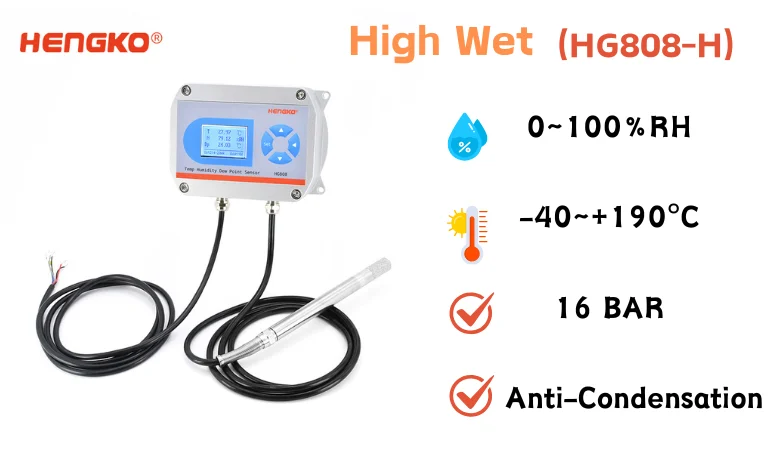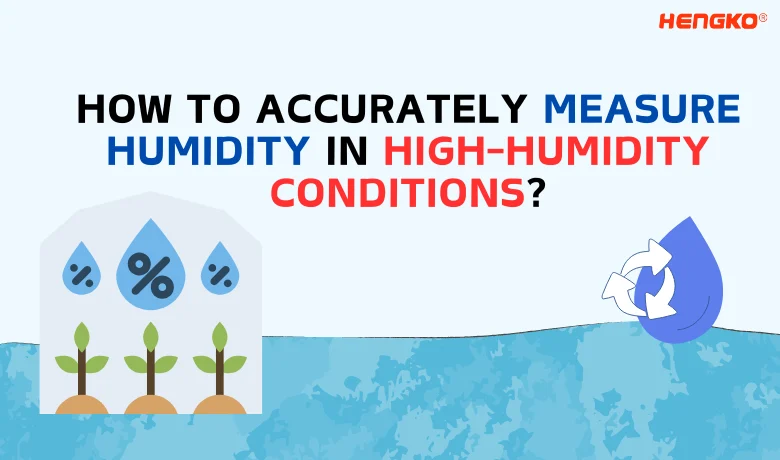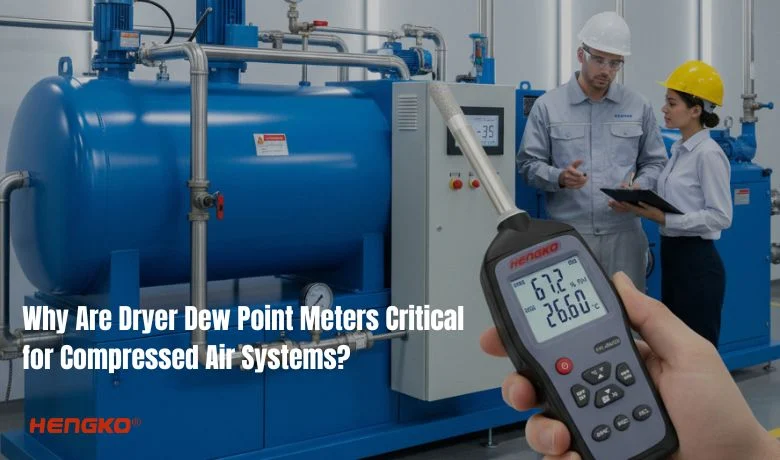はじめに
Have you ever struggled with condensation on your sensors, noticed a decline in measurement accuracy over time, or dealt with the rapid temperature fluctuations that make it hard to trust your readings?
If you work in environments such as greenhouses, food processing facilities, or pharmaceutical manufacturing plants, where precise temperature and humidity data are critical, you’ve probably encountered these unique challenges that come with high humidity. They can significantly impact the reliability of your measurements.
To tackle these challenges, choosing the right tools and strategies becomes essential. One effective solution is using high-humidity temperature and humidity transmitters, which are designed to provide accurate data even in extreme moisture conditions.
This article will provide you with practical tips to measure humidity in high-humidity environments. Whether you’re looking to prevent sensor issues, maintain accuracy, or ensure long-term reliability, these strategies will help you make the most of your equipment and keep your data precise.
Basic Concepts of Humidity and Dew Point
湿度: Refers to the amount of water vapor present in the air. It is typically expressed as a percentage, indicating how much moisture the air contains relative to its maximum capacity at a given temperature.
露点: The temperature at which air becomes saturated with moisture and water vapor begins to condense into liquid form.
The dew point is a key indicator of humidity and can affect various processes, from industrial operations to comfort levels in indoor environments.
These two measurements are critical in industries like manufacturing, pharmaceuticals, and HVAC, as they directly influence product quality, process efficiency, and environmental comfort.
Common Challenges in Measuring High-Humidity Environments
High-humidity environments can lead to a series of measurement issues, such as condensation on sensors, performance degradation, and temperature fluctuations, all of which can impact the accuracy and reliability of readings.
Condensation on Sensors: In environments where the humidity approaches saturation, water vapor will condense on the surface of sensors, leading to distorted readings or even sensor damage.
Performance Degradation: Prolonged exposure to high moisture levels can cause sensors to degrade over time, affecting their reliability and accuracy.
Rapid Temperature Changes: Fluctuations in temperature can influence humidity measurements, making it challenging to maintain consistent and precise data.
Electromagnetic Interference (EMI): High-humidity environments, especially those with industrial equipment, can present additional challenges due to electromagnetic interference, which can disrupt sensor readings.
How to Face the Challenges in Measuring Humidity?
When you are troubled by these problems, using temperature and humidity transmitters specifically designed for high humidity conditions will be the optimal solution.
With advanced technology, high-humidity transmitters offer multiple advantages to ensure precise measurements:
Anti-Condensation Features: High-humidity transmitters often incorporate anti-condensation coatings or design elements that prevent moisture buildup on the sensor surface. This helps maintain consistent and accurate readings.
Corrosion-Resistant Materials: Transmitters made from materials resistant to corrosion ensure durability and performance over time, even in environments where moisture or chemicals are present.
High-Precision Sensors: High-humidity transmitters come equipped with sensors that are capable of maintaining accuracy even when exposed to saturated air conditions. These sensors are often calibrated to handle rapid changes in humidity without compromising data quality.
Temperature Compensation: Advanced transmitters include temperature compensation features to correct measurements as temperature changes, which helps maintain reliable humidity and dew point readings.
Long-Term Durability: Since high-humidity transmitters are designed to withstand harsh environmental conditions, they tend to have a longer lifespan than standard sensors. Their durability reduces the need for frequent replacements, making them a more cost-effective solution in the long run.
These advanced devices, with features like anti-condensation coatings, corrosion resistance, and temperature compensation, provide long-term durability and precision, making them a cost-effective and efficient solution for challenging environments.
Factors to Consider When Choosing Measurement Equipment
When selecting a temperature and humidity transmitter for high-humidity environments, it’s crucial to consider several factors to ensure optimal performance:
耐久性がある: Choose sensors made from moisture-resistant materials for reliable performance in high-humidity environments.
Measurement Stability and Responsiveness: Ensure the device has a stable and fast response time to adapt to sudden changes in humidity levels.
Accuracy and Range: Confirm that the transmitter can accurately function within the specific temperature and humidity range required for your application (e.g., 80%–100% RH).
Advanced Techniques: You can choose transmitters with advanced features such as desiccants or protective housings to prevent condensation, dual-sensor systems for data verification, and automated recalibration to ensure consistent accuracy in challenging environments.

And We are excited to introduce our HG808-Wet series, which includes all the features mentioned above and is capable of measuring and monitoring humidity and dew point at temperatures up to 190°C. This device is ideal for high-humidity environments, such as factories or any setting where humidity reach around 90%RH, but humidity monitoring is still required. For more details, please visit our product page or send your monitoring requirements to us at sales@hengkometer.com.
Best Practices for Accurate Measurements
While choosing the right equipment is essential, proper usage and maintenance also play a key role in ensuring reliable humidity and dew point measurements:
定期的な校正: Periodic calibration is necessary to keep transmitters functioning at their best. This practice ensures that sensors maintain their accuracy over time, compensating for any potential drifts in measurement.
Routine Cleaning and Inspection: Inspect and clean the sensor components regularly to remove dust, debris, or any accumulated condensation. This helps maintain the integrity and accuracy of the device.
Optimal Installation Location: The placement of the transmitter can greatly influence its performance. To minimize the impact of direct condensation, install the device in a location away from sources of water vapor or areas prone to condensation, such as near cold surfaces or ventilation outlets.
Adequate Ventilation: Ensure there is sufficient air circulation around the sensor to provide a representative measurement of the ambient humidity and avoid localized effects that might skew data.
温度管理: Keep sensors at stable temperatures to prevent condensation and false readings from temperature fluctuations.
Shielding from EMI: In industrial settings where electromagnetic interference is a concern, consider using transmitters that come with protective shielding or ensure they are properly grounded to prevent disruptions in data transmission.
結論
Accurately measuring humidity and dew point in high-humidity environments requires a combination of using the right technology and adhering to best practices.
High-wet temperature and humidity transmitters provide a reliable solution with features like anti-condensation technology, temperature compensation, and corrosion resistance, which make them ideal for challenging environments.
By maintaining and installing these devices correctly, you can overcome common measurement issues and ensure the continuous, accurate monitoring needed for effective environmental control.
Ready to enhance your measurement accuracy and reliability? Discover how HENGKO can make a difference. With advanced anti-condensation technology and robust, corrosion-resistant build, HENGKO’s High-wet Transmitters ensures precise readings and long-term performance in high-humidity conditions. Contact us now at sales@hengkometer.com to get started!






